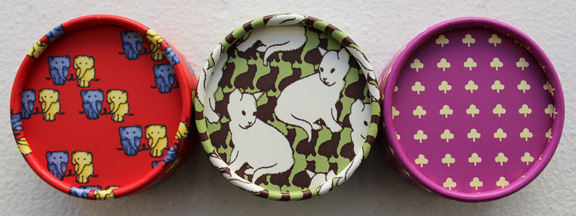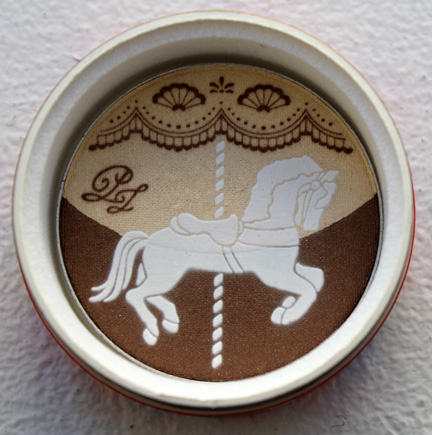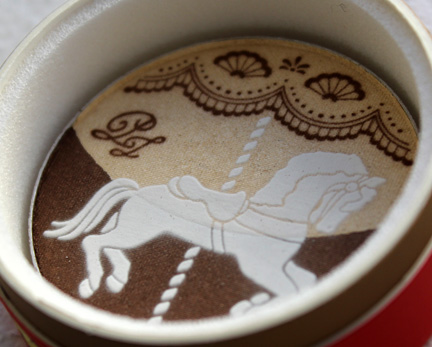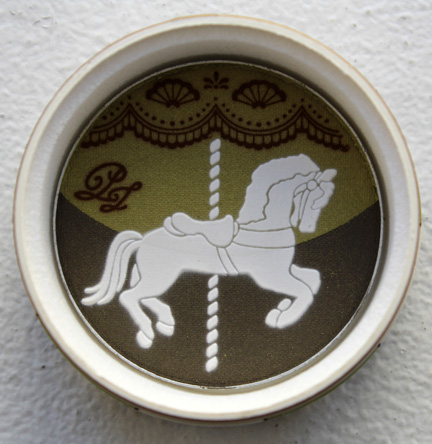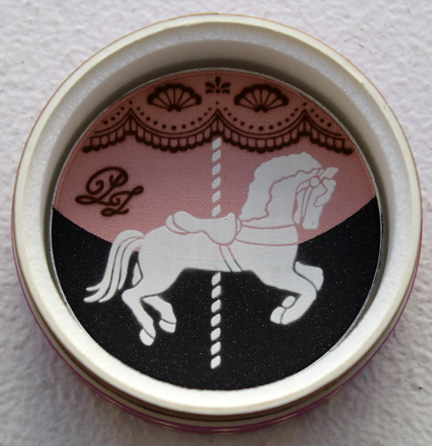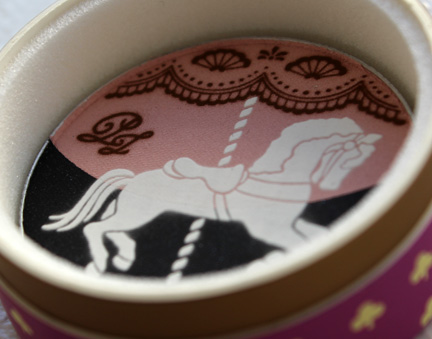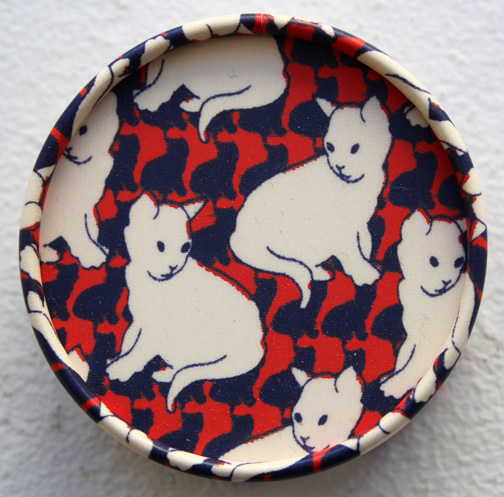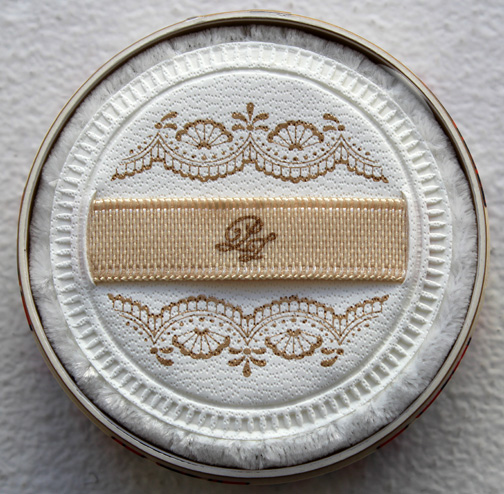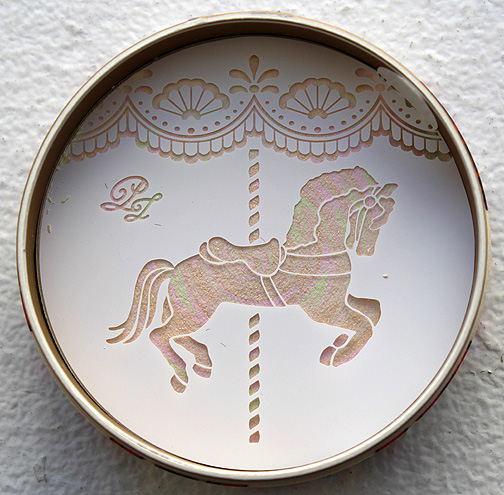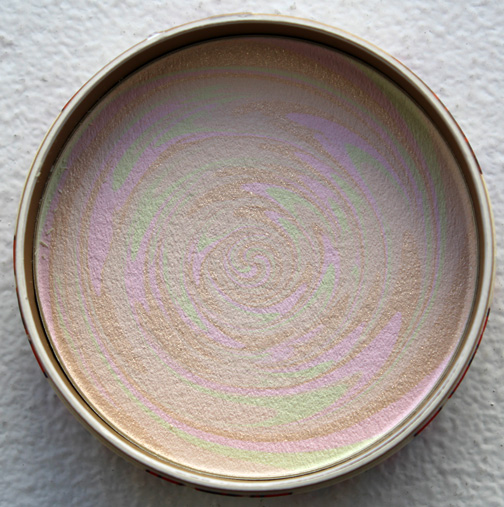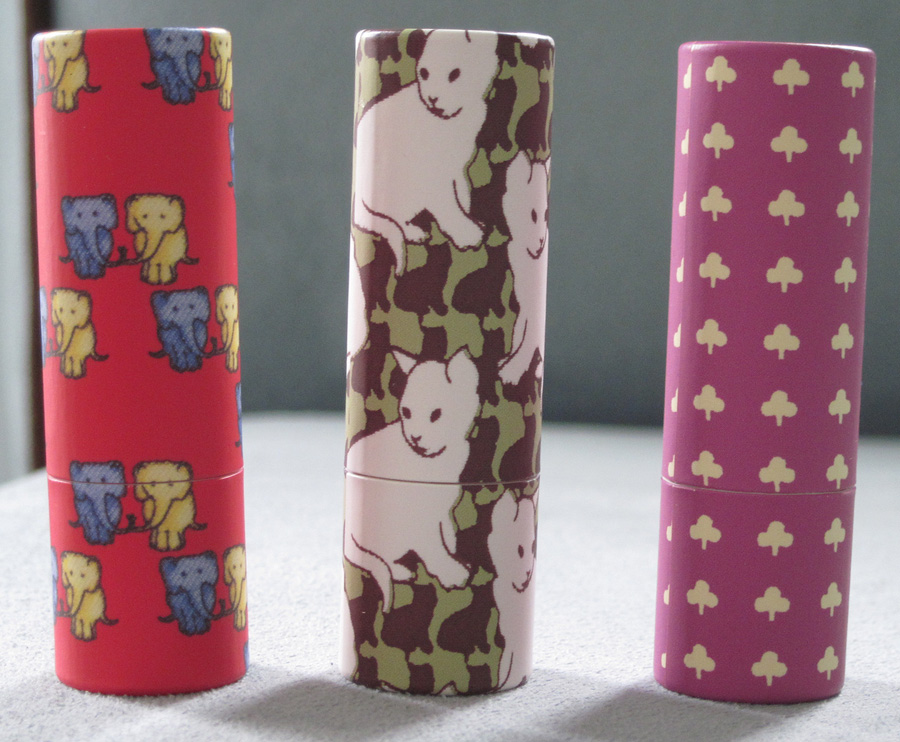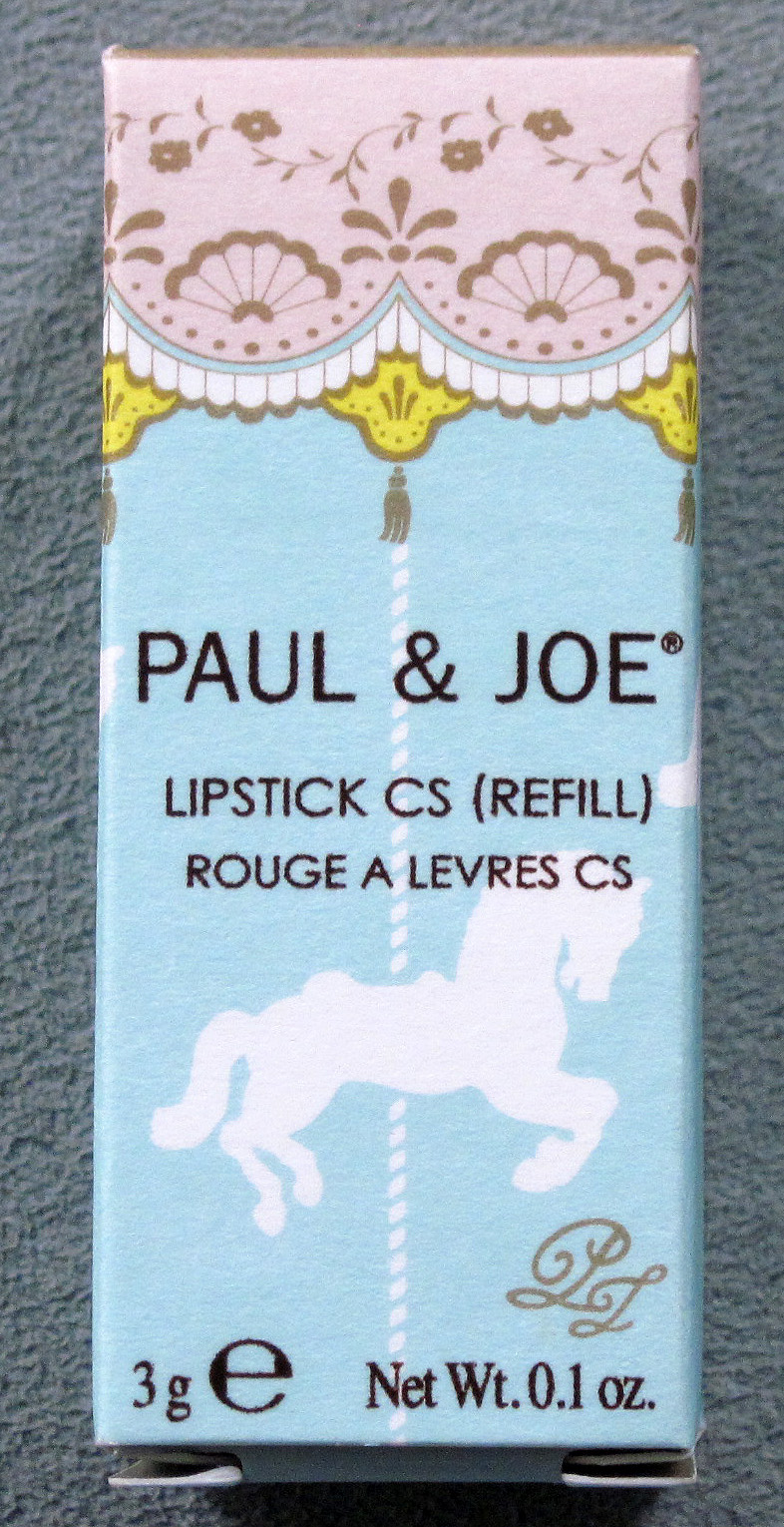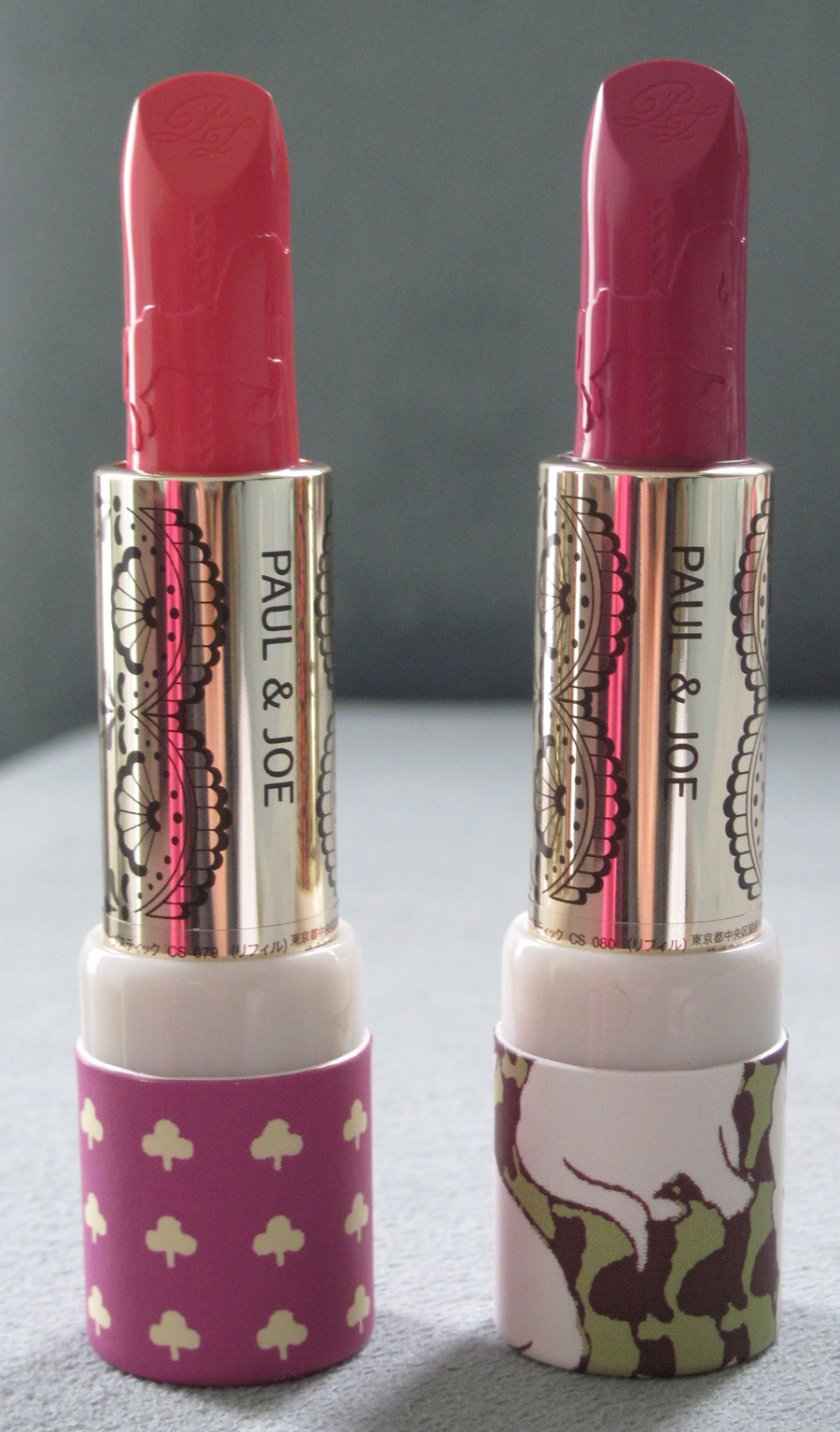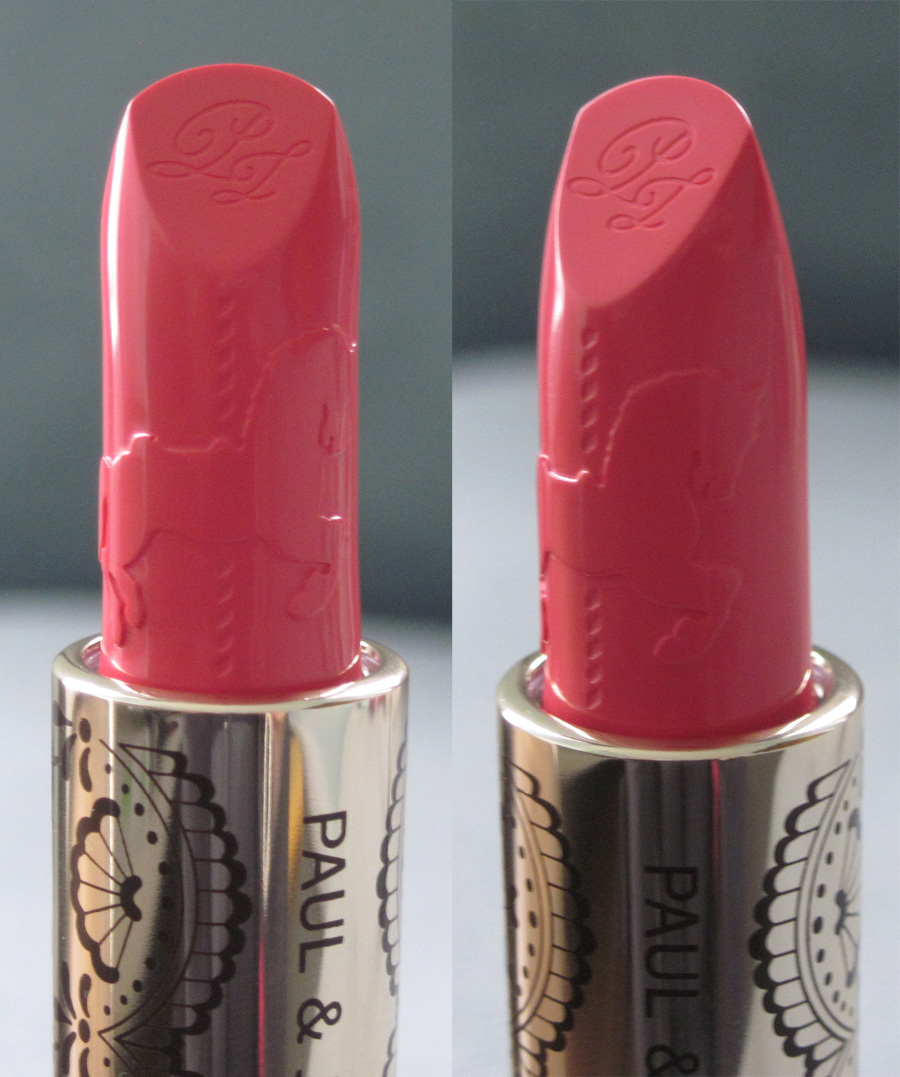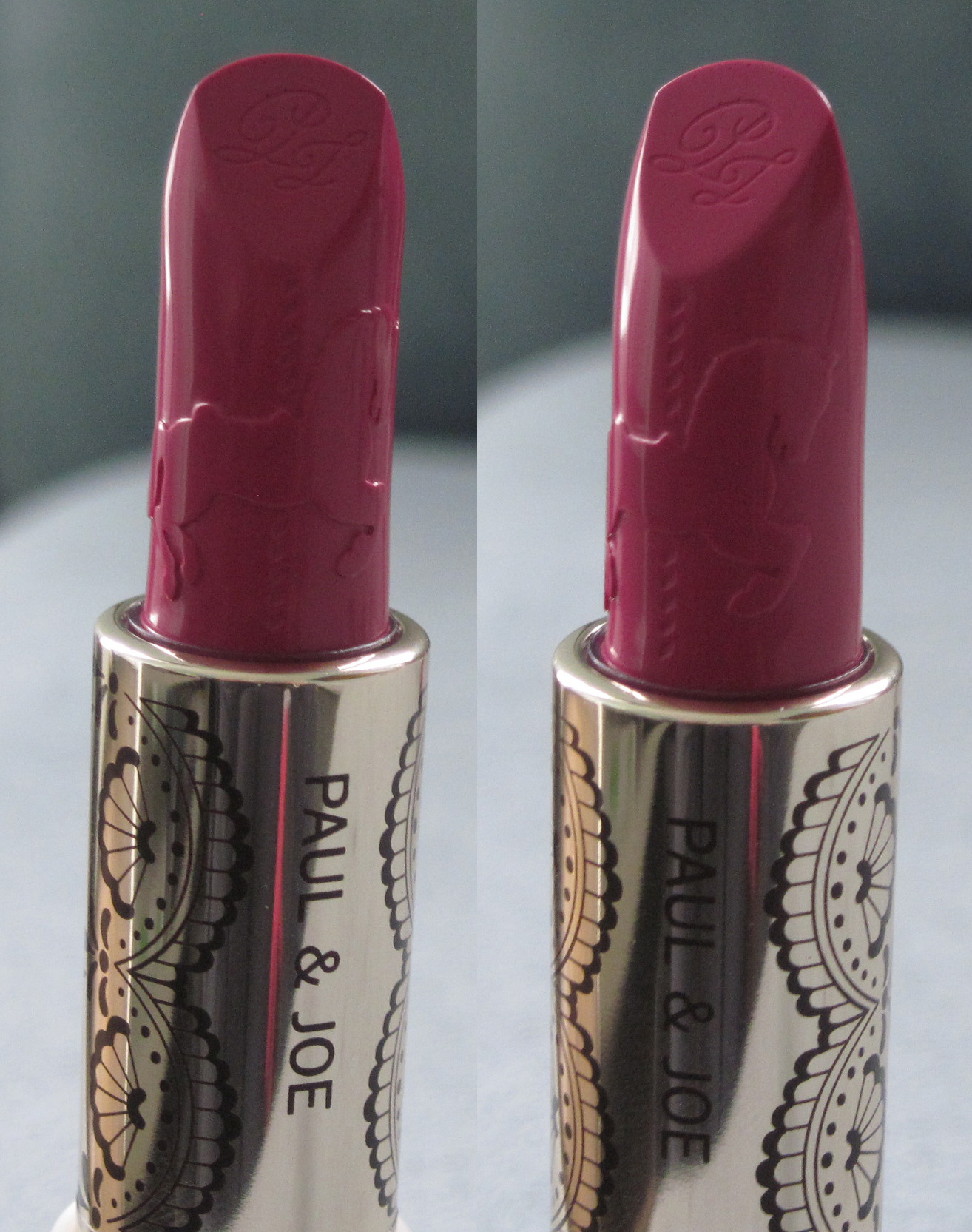I loved the old-timey quality of Paul & Joe's Carousel collection description. "Join Paul & Joe on 'Carousel' – a thrill ride of fashion that spins beauty, whimsy and enchantment into a revolution of style! You'll be dizzy with delight, when you discover the whirling, twirling assortment of textures and tones that beguile with childhood innocence – and tempt with grown-up sophistication! 'Carousel' spring 2013 – it's a ride you will remember!" The text definitely makes me think of my childhood vacations at the beach. The only place I've ever seen a carousel is a boardwalk, so the association between carousels and the shore is very strong for me – reading this text I can practically smell the caramel popcorn and salty ocean air.
Anyway, onto some pics of this delightfully nostalgic collection!
The collection features three eye color powders in predictably adorable prints.
Here's Calliope (082):
Montmartre (083):
La Belle Epoque (084):
There's also a pressed powder.
The elaborate puff and insert lend a cushy feel.
The powder itself consists of pink, green and gold swirls reminiscent of cotton candy.
Finally, three new lipstick cases were introduced for the collection.
I purchased two of the lipstick refills. Even the refill carton is extravagantly detailed.
Merry-Go-Round on the left, Manège on the right:
Merry-Go-Round:
Manège:
Now it's time to play one of the Curator's favorite games – seeing if the prints in the cosmetic collection appeared in Paul & Joe's seasonal fashions. And yes, we have a winner! The cat print from one of the eye shadows and the face powder is borrowed from several clothing items, including a dress and top.
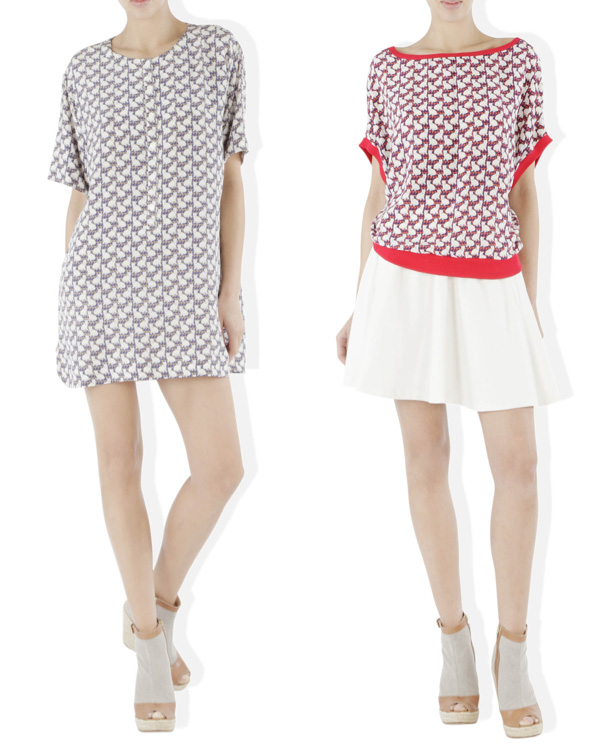
(images from paulandjoe.com)
Paul & Joe once again delivers a solid collection, hitting all their hallmarks – an extradordinary amount of detail in every piece of packaging, a design that perfectly expresses the collection's theme, and a variety of cute prints, including ones made just for the makeup collection but also one that ties into the seasonal fashion lineup.
Did you buy anything from Carousel?
